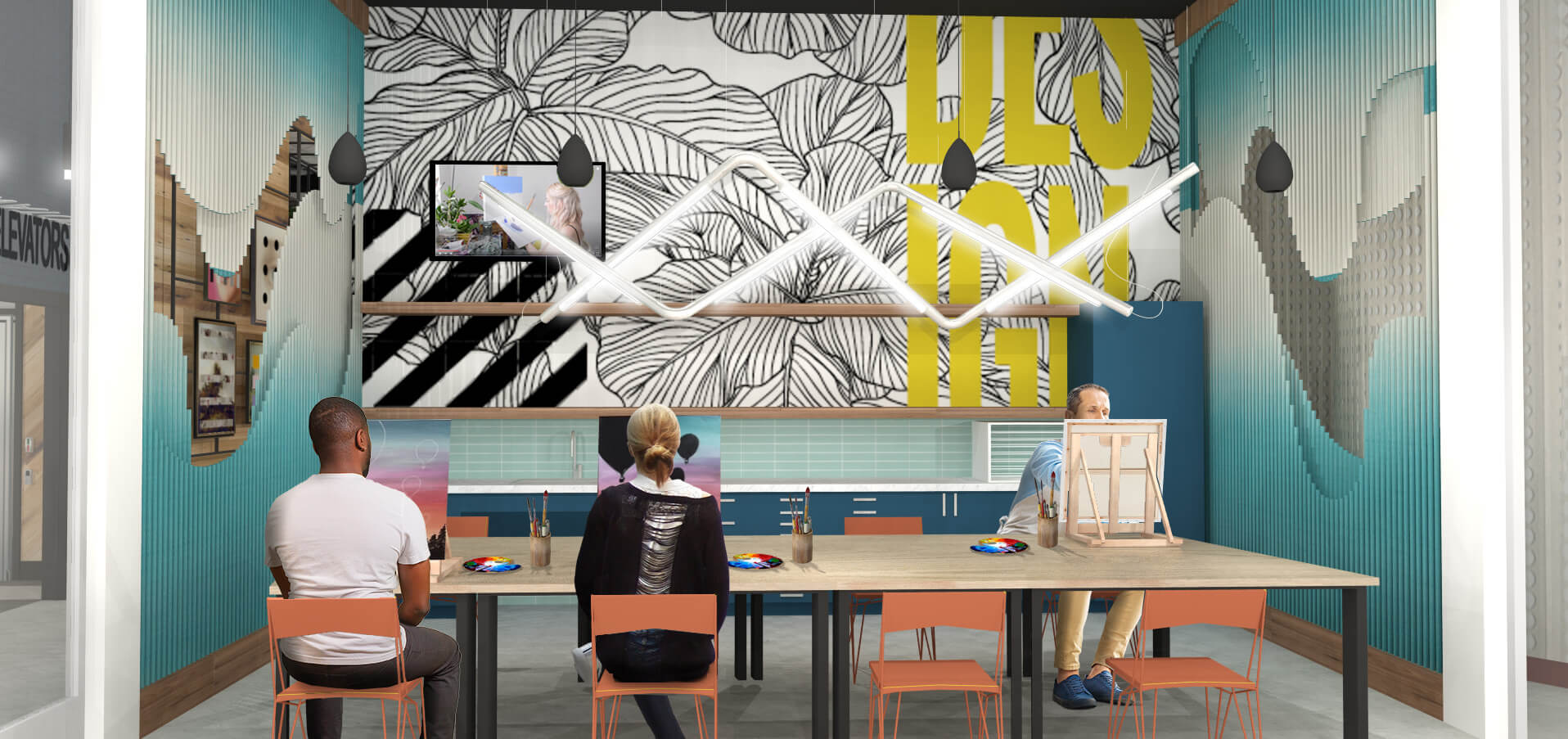One challenge that has been on the forefront of our multifamily clients’ minds over the last year is amenity occupancy and programming. During this time of uncertainty and change, it is vital to take a step back and truly understand community needs and expectations for communal spaces, allowing for thoughtful, strategic design.
Prior to the pandemic, amenities were all about shared spaces, promoting togetherness and creating social interaction. Amenities were the active pulse points of the communities. We’ve heard a bit of buzz about indoor amenities being a thing of the past. While we wholly support the need for outdoor connection and open spaces, eliminating indoor amenities seems too reactionary and, frankly, impossible, in areas where climate does not allow people to be outside year-round.
A recent study done by Assurant showed that the most important feature for residents in 2021 is larger living spaces because they are adapting to more time spent at home. This was a change from pre-pandemic times when lower-density areas or communities were more important. This tells us that people are wanting to spread out in their living space, not necessarily spend more time outside. In multifamily communities, we consider shared amenities an extension of residents’ living spaces. Extra care will be needed to make these indoor spaces possible by creating more indoor/outdoor connections, improving air circulation, incorporating biophilic design and utilizing strategic space planning.
All that being said, we are very much still focusing on indoor amenities, and specifically “super amenities” — spaces that add unique activities and support a broad range of lifestyles. Spaces such as recording studios, art studios, bowling allies, virtual reality lounges, maker spaces and demonstration kitchens allow for social interaction in our new state of extra caution. It’s important to note that middle market properties will be the most sought after, so being strategic about the unique amenities to offer, while not pricing rent out of attainability, will be a key factor.
In our previous article, we spoke of the idea of the “third place,” a place that isn’t home or work. The easiest way to decide which amenities will be important to one’s consumer is to look at the surrounding neighborhood and supplement key features that are lacking. Additionally, always consider the shared living spaces as extensions of residents’ units and offer something they can’t get in the same way behind their unit doors.
Depending on the market and its eagerness to bounce back from lock downs, supplementing the local neighborhoods may be more successful when tenants are unwilling or unable to leave the property. Communities have a responsibility but it’s also a huge asset to be able to instill trust and comfort for a tenant who does not feel that same comfort in completely public places. This will hold true beyond the pandemic, as well. Knowing that, we should feel confident in not eliminating indoor amenity offerings, but strategically giving them the thoughtfulness they need to be an asset to both the property and the resident.
